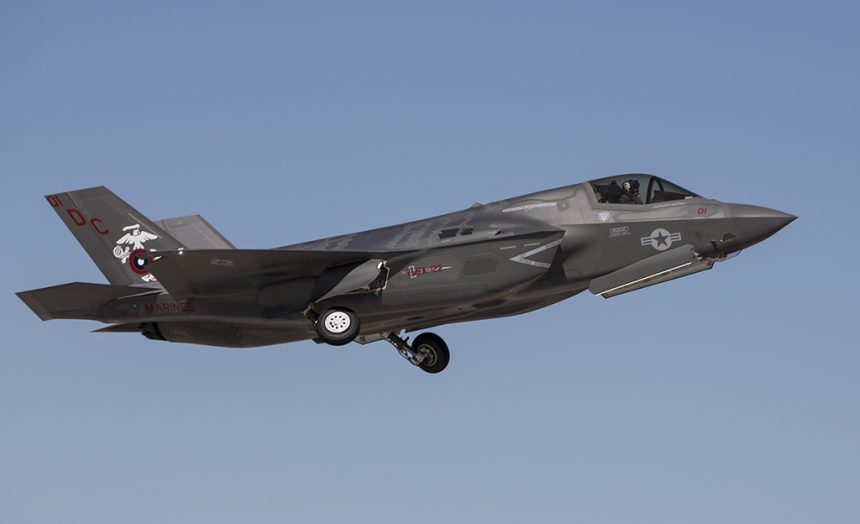First flight with the JSF marked the end of the first phase in the transition from a legacy F/A-18C Hornet squadron to an F-35B squadron.
On Mar. 29, 2018, Marine Fighter Attack Squadron (VMFA) 122, “The Flying Leathernecks,” launched their first sorties in the F-35B, the STOVL (Short Take Off Vertical Landing) variant of the Lightning II stealth jet, at Marine Corps Air Station Yuma, Arizona.
“This was a critical moment for us because it got the ball rolling for us to have a fully operational squadron,” said Lt. Col. John P. Price, the commanding officer of VMFA-122 and one of the pilots who took part in the first mission, in a public release.
VMFA-122 was originally based at MCAS Beaufort, South Carolina and moved to MCAS Yuma to stand up JSF operations in October 2017.

“It highlights the flexibility and agility that we have inside the Marine Corps to accomplish the mission,” said Price. “We have a lot of great Marines and Sailors here from Yuma and all over the Marine Corps. It’s truly impressive how quickly it was put together.”
“Starting over, all of our programs have to be rebuilt and reestablished here on MCAS Yuma with a whole new group of people,” said Maj. John Dirk, the executive officer of VMFA-122. “This is the culmination of that first part and going forward we get to maintain and improve them so we can make the squadron have full combat capability.”
The commencement of flight operations marked the successful transition of yet another Marine Corps squadron and another key step in the long-term plan to replace the legacy F/A-18 Hornet, EA-6B Prowler, and AV-8B Harrier fleets with a total of 353 F-35Bs and 67 F-35Cs by 2032.

Meanwhile, the U.S. Marine Corps is increasing its operational experience with the new aircraft.
Last year, on Jan. 9, 2017, VMFA-121 “Green Knights”, an F-35B squadron with 3rd Marine Aircraft Wing, moved from Yuma to MCAS Iwakuni, Japan, a reloacation that put the F-35B not far from the Korean Peninsula, where the JSF has taken part in local drills as well as some routine “shows of force”: for instance, on Aug. 30, four U.S. Marine Corps F-35B Lightning II joined two USAF B-1B Lancers from Guam onf a 10-hour mission that brought the “package” over waters near Kyushu, Japan, then across the Korean Peninsula. Interestingly, during that mission, the F-35Bs flew with the radar reflectors used to make LO (Low Observable) aircraft clearly visible on radars and also dropped their 1,000-lb GBU-32 JDAMs (Joint Direct Attack Munitions) on Pilsung firing range. On a subsequent mission on Sept. 18, the aircraft took part in a “sequenced bilateral show of force” over the Korean peninsula carrying “live” AIM-120 AMRAAM missiles in the internal weapons bays. More recently, on Mar. 5, 2018, a detachment of F-35B belonging to VMFA-121 deplyed aboard the amphibious assault ship USS Wasp (LHD 1) in the Indo-Pacific. The F-35B, assigned under the Okinawa-based 31st Marine Expeditionary Unit, conducted a series of qualification flights on Wasp over a multi-day period following those the F-35Bs and 2,300 Marines that make up the 31st MEU will deploy aboard ships of the Wasp Expeditionary Strike Group for follow-on operations in the Indo-Pacific region as part of a routine patrol to strengthen regional alliances, provide rapid-response capability, and advance the Up-Gunned ESG concept, a U.S. Pacific-fleet initiated concept that aims to provide lethality and survivability to a traditional three-ship amphibious ready group by integrating multi-mission surface combatants and F-35B into amphibious operations.









